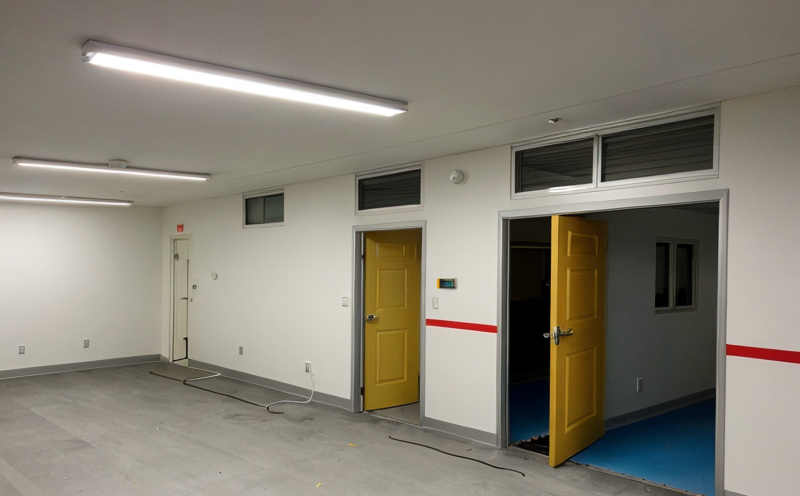ASTM D1003 Transparency Testing of Emergency Lighting Diffusers
The ASTM D1003 test method is a critical standard that ensures the transparency and light diffusion properties of emergency lighting diffusers. This testing procedure aims to verify whether the diffuser allows for the passage of light while maintaining its intended function during an emergency evacuation scenario.
Emergency lighting systems are designed to provide adequate illumination in case of power failures, ensuring safety and compliance with building codes. The performance of these systems heavily depends on the quality of their diffusers, which play a crucial role in spreading light evenly across an area. ASTM D1003 specifically addresses the transparency aspect by measuring how much light passes through the diffuser without distorting it.
During testing, specimens are exposed to standardized lighting conditions that simulate real-world scenarios where these diffusers would be used. Specimens undergo rigorous examination under controlled environments using high-precision instruments capable of detecting even slight variations in transparency levels. Compliance with this standard ensures not only functional integrity but also enhances user safety by providing consistent and reliable performance.
For instance, a poorly designed or manufactured diffuser might cause light to scatter unevenly, leading to potential hazards such as glare or shadows that could impede visibility during critical moments like evacuations. By adhering strictly to ASTM D1003 standards, manufacturers ensure their products meet the highest quality expectations set forth by regulatory bodies worldwide.
In summary, ASTM D1003 testing is essential for maintaining consistent and high-quality emergency lighting diffusers that contribute significantly towards overall safety measures within facilities. Understanding the nuances of this standard helps stakeholders appreciate its importance in ensuring product reliability and compliance with international norms.
Scope and Methodology
The scope of ASTM D1003 transparency testing encompasses the evaluation of the light transmission properties through diffusers intended for use within emergency lighting systems. This includes assessing whether these materials allow sufficient visible light to pass through while minimizing glare and ensuring even illumination.
To conduct this test, specimens are prepared according to specified dimensions and then mounted onto a standardized fixture aligned perpendicular to the source of incident light. The light source used during testing must be consistent with those specified in ASTM D1003 guidelines. Once positioned correctly, readings are taken using photometers calibrated for accurate measurement.
Acceptance criteria stipulate that at least 85% of visible light should penetrate the diffuser without significant distortion or loss. Any deviation from these thresholds would indicate non-compliance with ASTM D1003 requirements and may necessitate rework or replacement of affected components.
This meticulous process ensures that only materials meeting stringent criteria are approved for use in critical safety applications like emergency lighting systems. It emphasizes the importance of precise manufacturing techniques and quality control measures throughout production processes.
Benefits
- Increased Safety: Ensures that diffusers provide clear, unobstructed paths for light during emergencies, thereby enhancing visibility and reducing accidents.
- Compliance: Helps manufacturers meet regulatory requirements set by authorities such as NFPA (National Fire Protection Association) and IEC (International Electrotechnical Commission).
- Predictable Performance: Provides consistent results across different environments, ensuring reliable operation under various conditions.
Competitive Advantage and Market Impact
Adhering to ASTM D1003 transparency testing not only ensures compliance with industry regulations but also provides significant competitive advantages in several ways:
- Enhanced Reputation: Demonstrating commitment to high-quality standards can enhance the reputation of a company among stakeholders, including customers and regulatory bodies.
- Innovation Opportunities: By continuously improving testing protocols and methodologies, manufacturers stay ahead in innovation, setting new benchmarks for quality assurance practices.
- Better Customer Trust: Ensuring consistent performance through rigorous testing builds trust with end-users who rely on reliable emergency lighting systems during critical situations.
In conclusion, incorporating ASTM D1003 transparency testing into your manufacturing process is not just a compliance requirement but also an investment in long-term success and safety.





